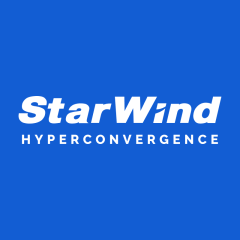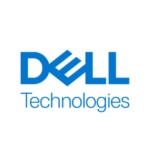What is our primary use case?
We needed an efficient solution to replace SAN-based clustering that we can build and drop into branch offices without consuming too much rack space or requiring a great deal of expertise. Starwind VSAN delivers exactly this alongside best-in-class support services.
The value for money is fantastic, and the product's simplicity makes it accessible even for beginners. It's easy to recommend Starwind for its support, pricing, scalability, and compatibility with both Windows and Linux.
How has it helped my organization?
We are more confident than ever in the reliability of our office services thanks to the mini-clusters that Starwind has facilitated. We no longer have to plan outages to perform updates, which betters our ability to harden the security in our offices.
Starwind VSAN exceeded our expectations as a two-node cluster storage solution. It offered a cost-effective alternative to expensive hardware SANs and is a great product offering good value for money.
One remarkable feature is the elimination of any single point of failure of storage, which was common with traditional 3-2-1 approaches.
What is most valuable?
The ability to run a two-node cluster without a dedicated witness has made this an excellent product for small deployments, which is right on target for our needs in regional offices.
One of the most crucial aspects of Starwind VSAN is its ability to provide high availability and redundancy across our Hyper-V clusters. By creating a fault-tolerant environment with redundant storage, it ensures that our VMs keep running even if a node or storage component fails. This feature has proven invaluable in maintaining uninterrupted operations, especially during critical times.
What needs improvement?
The software could benefit from more tooling to help with initial deployment. The iSCSI configuration stage would benefit from some sort of bootstrapping to get it set up the way Starwind recommends.
Introducing a centralized web-based management interface would streamline the administration process. A user-friendly web console that allows for easy monitoring and configuration of the entire VSAN infrastructure would be a significant improvement.
While the product currently supports Hyper-V, expanding compatibility to other popular hypervisors like VMware vSphere and KVM would increase its market reach and cater to a wider range of users.
For how long have I used the solution?
We've used the solution for four months.
What do I think about the stability of the solution?
Since implementing StarWind VSAN, we've experienced little to no downtime. The system has been running like a champ, handling our workloads without a hitch. I can't stress enough how crucial this stability is for our business operations. Knowing that our critical data and virtual machines are in safe hands brings a sense of relief.
What do I think about the scalability of the solution?
The scalability of StarWind Virtual SAN is one of its standout features that really impressed me. It's been a game-changer for our storage needs, allowing us to grow our infrastructure seamlessly as our business expands. The way it handles scaling is just so smooth and efficient.
How are customer service and support?
The customer service and support provided by StarWind were exceptional. Whenever we reached out with questions or concerns, they were quick to respond and genuinely attentive to our needs.
The support team was knowledgeable and patient and went above and beyond to ensure our issues were resolved quickly.
Their dedication and responsiveness made us feel valued as customers, and it was a pleasure working with them throughout our journey with StarWind.
How would you rate customer service and support?
Which solution did I use previously and why did I switch?
We used native Hyper-V replication before this, which didn't provide the high availability we were looking for.
How was the initial setup?
Setting up StarWind Virtual SAN was remarkably smooth and user-friendly.
The installation process was well-documented, and the setup wizard guided us seamlessly through the steps. Using our existing hardware was a breeze, saving us costs without compromising on the benefits.
The management console was intuitive, and real-time status updates provided confidence. The support team was responsive and helpful, making the initial setup a positive experience.
The scale-out architecture allowed us to grow our storage infrastructure effortlessly.
Overall, StarWind made it easy to deploy a solid and reliable storage solution.
What about the implementation team?
We handled the initial setup in-house.
What was our ROI?
I can't speak to the current ROI.
What's my experience with pricing, setup cost, and licensing?
Compared to other vendors in the shared storage space, Starwind is extremely price competitive and has a simple licensing model. I recommend it highly if you're on a budget.
Which other solutions did I evaluate?
We did not evaluate other options.
Which deployment model are you using for this solution?
On-premises
Disclosure: My company does not have a business relationship with this vendor other than being a customer.



















